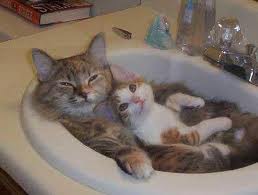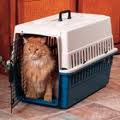Archive for December, 2010
Checking any suspicious lumps on your dog
 Many middle aged and senior dogs, especially those that are overweight develop benign, fatty tumors under their skin. These growths are usually located on the belly or on the upper legs and are generally harmless. If you notice a lump on your dog, have your veterinarian check it out. If is a lipoma (benign tumor) and the dog’s movement is not compromised, then no treatment or pet medication is necessary. It is still smart to keep an eye on the fatty deposit to make sure that it doesn’t grow. Your veterinarian may choose to biopsy the lipoma every now and then to check for any cancerous changes. Dogs that have one lipoma are often prone to more. This doesn’t mean that you should dismiss any new lumps or bumps. Always ask your vet to give each on a proper exam.
Many middle aged and senior dogs, especially those that are overweight develop benign, fatty tumors under their skin. These growths are usually located on the belly or on the upper legs and are generally harmless. If you notice a lump on your dog, have your veterinarian check it out. If is a lipoma (benign tumor) and the dog’s movement is not compromised, then no treatment or pet medication is necessary. It is still smart to keep an eye on the fatty deposit to make sure that it doesn’t grow. Your veterinarian may choose to biopsy the lipoma every now and then to check for any cancerous changes. Dogs that have one lipoma are often prone to more. This doesn’t mean that you should dismiss any new lumps or bumps. Always ask your vet to give each on a proper exam.
How long should you keep your puppy on puppy food?
 Regular dog food does not provide the high level of nutrients that puppy food does. This is the reason why we feed our puppies puppy chow and puppy foods. Puppies have special nutrient needs. Your puppy should receive puppy food for the first year. If you own a large breed, then I would keep him on puppy food for 18 months. Most dog food manufacturers offer a special formula for puppies that is higher in protein. This food also has the necessary fats, vitamins and minerals to meet your puppy’s growing needs.
Regular dog food does not provide the high level of nutrients that puppy food does. This is the reason why we feed our puppies puppy chow and puppy foods. Puppies have special nutrient needs. Your puppy should receive puppy food for the first year. If you own a large breed, then I would keep him on puppy food for 18 months. Most dog food manufacturers offer a special formula for puppies that is higher in protein. This food also has the necessary fats, vitamins and minerals to meet your puppy’s growing needs.
Feed your puppy three times a day if he is six months or younger. After six months, feed him twice a day. Don’t leave the food out. Feed him at specific times and make sure you are there during the feedings. You want to make sure that he stays on a certain schedule.
It a good idea to have your puppy relax for about one hour after his feedings. This will help him digest his food. Then take him out for a walk.
Provide dog treats for good behavior but don’t over do it or your dog will expect them all the time.
Taking care of your dog’s teeth
 According to the American Veterinary Dental Society, 80% of dogs show oral disease by age 3. This is the most common problem treated at small animal health clinics today. The build up of bacteria can casue many different types of problems including heart, kidney and liver problems. Tooth brushing should be a routine part of your dog’s oral maintenance.
According to the American Veterinary Dental Society, 80% of dogs show oral disease by age 3. This is the most common problem treated at small animal health clinics today. The build up of bacteria can casue many different types of problems including heart, kidney and liver problems. Tooth brushing should be a routine part of your dog’s oral maintenance.
So, how can you tell if your dog has oral disease? Here are some things that you should be looking for:
- Bad breath
- Bleeding
- Red inflamed gums
- Difficulty chewing
- Any change in eating habits
- Pawing at the mouth
If you notice any of these signs, take your dog to the vet. He will perform a dental exam including x rays, and provide the necessary treatment. He may use a periodontal probe to search for gum pockets and other problems. If your dog requires anesthesia for the procedure, new, injectable, anesthetics are available which are short term and very safe.
There are some over the counter and prescription pet medications that can help this problem. They are:
- Hills prescription diet
- Over the counter products such as Chew EZ
- Various tooth brushes
- Prescription products and tooth pastes
Follow your vets advice and don’t ignore this problem!
Is it a good idea to give a puppy as a christmas gift?
 There are several answers to this question. In my opinion, if the person knows that are getting a puppy and are prepared for it, then it would be fine. If it’s going to be a surprise, then in my opinion, it is simply not a good idea. Many times, the recipient is not prepared for the responsibility of house training and caring for a puppy. Another reason is that the person may not be able to handle the financial obligations of dog ownership.
There are several answers to this question. In my opinion, if the person knows that are getting a puppy and are prepared for it, then it would be fine. If it’s going to be a surprise, then in my opinion, it is simply not a good idea. Many times, the recipient is not prepared for the responsibility of house training and caring for a puppy. Another reason is that the person may not be able to handle the financial obligations of dog ownership.
The breed of dog that a person wishes to own is more of a personal preference. Certain breeds are better suited for certain people. Some dogs are good with children and some are not. You can’t simply go out and get a puppy for a person as a surprise and expect them to be able to love and care of it properly without even knowing anything about the dog.
Christmas puppies are chosen hastily and given quickly. The person getting the dog will not even have any of the equipment necessary to handle a new dog. Things like a dog crate , leash, food etc are very important. Most of the time the puppy will end up back at the shelter or the store where they were purchased from. This is not at all fair to the animal. My advice, don’t do it!
Choosing a kitten to put under the tree
 Maybe you’re thinking of giving a kitten as a pet. There are three distinct cat personality types.
Maybe you’re thinking of giving a kitten as a pet. There are three distinct cat personality types.
- active outgoing
- shy timid
- active aggressive
If you’re going to pick out a new kitten, you’ll want to find one that is friendly and well socialized. Take the kitten you like to a quiet corner and make sure that she is content and likes to be stroked. A kitten who constantly struggles, may not be for you. You may also want to tease the kitten with a feather or cat toy to see if she plays. If she bats and pounces on it, she’s a normal, playful inquisitive kitten. If your kitten will go outdoors and you don’t want one that will chase birds and chip monks, ask about the mother cat. Predatory aggression is inherited and also learned. The mother’s behavior may give you insight into her kitten’s future traits.
www.yourpetscount.com
Senior cat care
 More cats are living longer than their nine lives because of better veterinary care. These cats may need a little extra assistance as they age. To make life easier for a senior cat, provide a comfortable cat bed and a warm spot because older cats feel a chill more often. If your house has multiple levels, keep a litter box on each level. Arrange furniture in such as way that it will help your cat reach his favorite place above the floor. Play with your cat often to keep his mind and body active. Take your senior cat to the vet a little more often to detect any problems before they develop into something serious. Make sure that your cat drinks plenty of water. To encourage him, use a shallow bowl and fill it often. You will have many good years caring for your senior cat!
More cats are living longer than their nine lives because of better veterinary care. These cats may need a little extra assistance as they age. To make life easier for a senior cat, provide a comfortable cat bed and a warm spot because older cats feel a chill more often. If your house has multiple levels, keep a litter box on each level. Arrange furniture in such as way that it will help your cat reach his favorite place above the floor. Play with your cat often to keep his mind and body active. Take your senior cat to the vet a little more often to detect any problems before they develop into something serious. Make sure that your cat drinks plenty of water. To encourage him, use a shallow bowl and fill it often. You will have many good years caring for your senior cat!
Carrying your cat
 Many cats don’t like the idea of being pushed in their cat carrier. It really doesn’t have to be that way. To make your cat feel safe, choose a carrier that has small holes for ventilation. Make sure that it does not have any big windows. A cat will feel safer if he does not have any outside stimuli. The best way to get your car accustomed to his carrier is to do so while he is still a kitten. Start by leaving the carrier out with the door open for a few days. Put a cat toy, and a soft blanket inside to make it enticing for your cat. Put a few cat treats away from the carrier door and bring them closer each day. Then feed the cat inside the carrier. Soon he will accept his carrier as a safe place to snuggle not a scary place to be afraid of.
Many cats don’t like the idea of being pushed in their cat carrier. It really doesn’t have to be that way. To make your cat feel safe, choose a carrier that has small holes for ventilation. Make sure that it does not have any big windows. A cat will feel safer if he does not have any outside stimuli. The best way to get your car accustomed to his carrier is to do so while he is still a kitten. Start by leaving the carrier out with the door open for a few days. Put a cat toy, and a soft blanket inside to make it enticing for your cat. Put a few cat treats away from the carrier door and bring them closer each day. Then feed the cat inside the carrier. Soon he will accept his carrier as a safe place to snuggle not a scary place to be afraid of.
Does your cat like to climb the christmas tree? Mine does
 My younger cat, Millie is energetic and a little more mischievous than my older cat Mollie. Yesterday, while I was writing my blog article, I noticed that the ornaments on my tree began to gently shake. I looked under the tree to see if any of my two cats was lying there. No cats, tree still shaking. Then I looked up and noticed a cat tail sticking out of the tree. It was my younger cat, Millie who was trying desperately to keep me from noticing her! She does this at least once a year. When this happens, I don’t try to pull her out. I don’t scream and yell at her but rather I gently tell her to “get down.” She usually obeys and meticulously, climbs out of the tree without knocking anything over.
My younger cat, Millie is energetic and a little more mischievous than my older cat Mollie. Yesterday, while I was writing my blog article, I noticed that the ornaments on my tree began to gently shake. I looked under the tree to see if any of my two cats was lying there. No cats, tree still shaking. Then I looked up and noticed a cat tail sticking out of the tree. It was my younger cat, Millie who was trying desperately to keep me from noticing her! She does this at least once a year. When this happens, I don’t try to pull her out. I don’t scream and yell at her but rather I gently tell her to “get down.” She usually obeys and meticulously, climbs out of the tree without knocking anything over.
This is not a good thing. Cats could do lots of damage to your beautifully decorated tree. It is worse if you have a real tree. Cats love the smell and bark. Here are some tips that may help.
1. Let the tree sit undecorated for awhile. This will give your cat the chance to get used to it being there.
2. Place foil around the trunk. Cats usually don’t like walking on foil.
3. If your cat insists on going around the tree or swatting the ornaments, try squirting her with a bottle of water or water mixed with white vinegar. There are some scents on the market that can discourage your cat from going near certain things.
4. Try placing orange peels in and around the tree. Cats don’t like the smell of oranges.
5. Try playing with her more frequently. Get her tired by having her chase her fishing pole cat toy!
6. If all else fails, you’ll have to keep your cat out of the room during the holidays. This would be the last resort.
Feeding your young pup
 Most puppies are weaned between the fourth and seventh week. You should introduce food during the end of the weaning process. Your puppy’s diet should consist of about 25% protein and 19% fat. Make sure that you feed a high quality dog food to your pup. Make sure that you read the label before buying your pup food. Protein should come from a good source like chicken meal, turkey meal, fish, potatoes, lamb and rice. Avoid products that are inferior such as wheat, corn and chicken “products.” These are hard for your pup to digest and can lead to health problems.
Most puppies are weaned between the fourth and seventh week. You should introduce food during the end of the weaning process. Your puppy’s diet should consist of about 25% protein and 19% fat. Make sure that you feed a high quality dog food to your pup. Make sure that you read the label before buying your pup food. Protein should come from a good source like chicken meal, turkey meal, fish, potatoes, lamb and rice. Avoid products that are inferior such as wheat, corn and chicken “products.” These are hard for your pup to digest and can lead to health problems.
Feed your puppy 3 to 4 times per day. Give you puppy small portions and remove any excess food after 30 minutes. This will help to discipline him and keep him from overeating. When the puppy is six months, reduce his feeding schedule to twice a day and give him one cup each time. You can start to give him some dog treats at this time.
Feline Distemper
 Kittens are the most susceptible to feline distemper. When this virus hits, it can kill your cat no matter what her age is. This disease doesn’t affect dogs or people but it does spread very quickly among cats. Transmission occurs through contact with an infected cats feces, bodily fluids or through fleas. The virus attacks the cats gastrointestinal track. Typical symptoms includes listlessness, fever, loss of appetite and vomiting. To prevent this horrible disease, have your kitten vaccinated as soon as she stops nursing. If you adopt a kitten, always check whether or not it has been vaccinated for distemper. Then follow your vets recommendations for re -vaccination so your cat stays free of infection. Remember, there is no pet medication that could cure this disease.
Kittens are the most susceptible to feline distemper. When this virus hits, it can kill your cat no matter what her age is. This disease doesn’t affect dogs or people but it does spread very quickly among cats. Transmission occurs through contact with an infected cats feces, bodily fluids or through fleas. The virus attacks the cats gastrointestinal track. Typical symptoms includes listlessness, fever, loss of appetite and vomiting. To prevent this horrible disease, have your kitten vaccinated as soon as she stops nursing. If you adopt a kitten, always check whether or not it has been vaccinated for distemper. Then follow your vets recommendations for re -vaccination so your cat stays free of infection. Remember, there is no pet medication that could cure this disease.